Details Make the Difference in Baroque, Rococo Style Furniture
It'south aureate with ornate decorations, upholstered in cute silk: It's a baroque sofa. Or is it a Rococo-style sofa? Both of these furniture styles are beautiful and in-need, only do you know the difference between Baroque and Rococo?

When looking at these styles, clearly, you can run into why it's sometimes difficult to tell the difference betwixt Baroque and Rococo. Each has defining features, fifty-fifty though the ii styles as well have a lot in mutual.
Bizarre fashion definition
The term "bizarre" refers to a period spanning from the 17th century until the kickoff of the 18thursday century. This is when the fashion that started in Italy effectually 1600 became popular throughout Europe and across.
- Co-ordinate to Stip International – and Webster'due south dictionary — the term baroque probable comes from the Portuguese word, "barocco." It ways "uneven pearl."
- The style above all uses classical orders and ornaments in a free and sculptural way. Its features evoke motion and have a dramatic issue.
- Baroque mode establish its manner into nigh parts of culture. This particularly includes gardens, architecture, music and fine art.

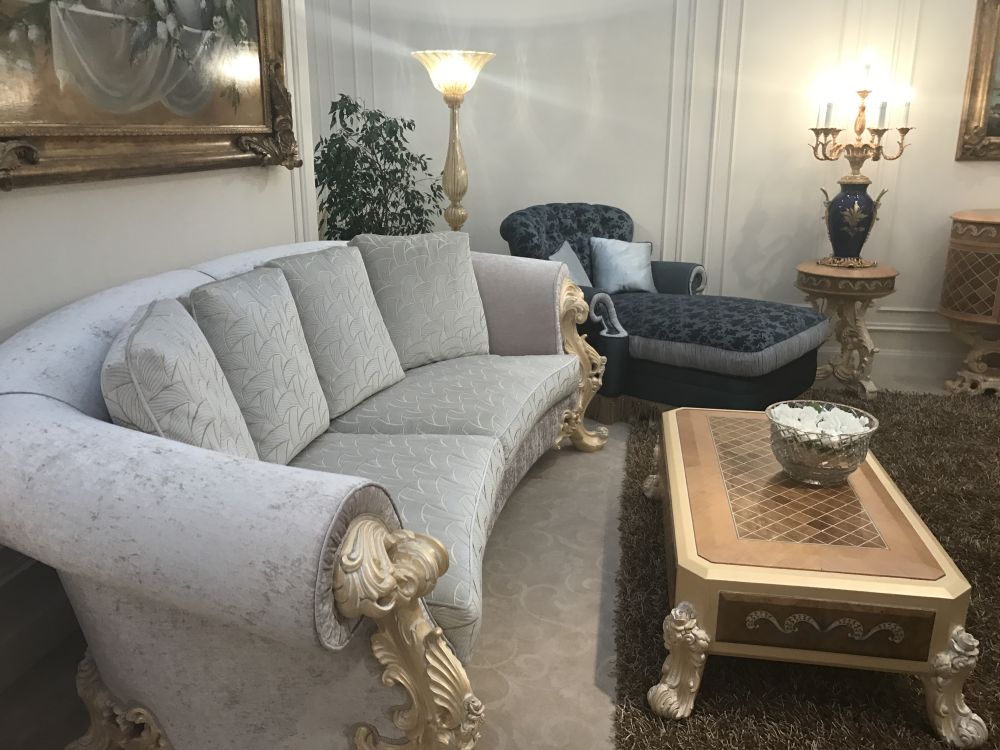
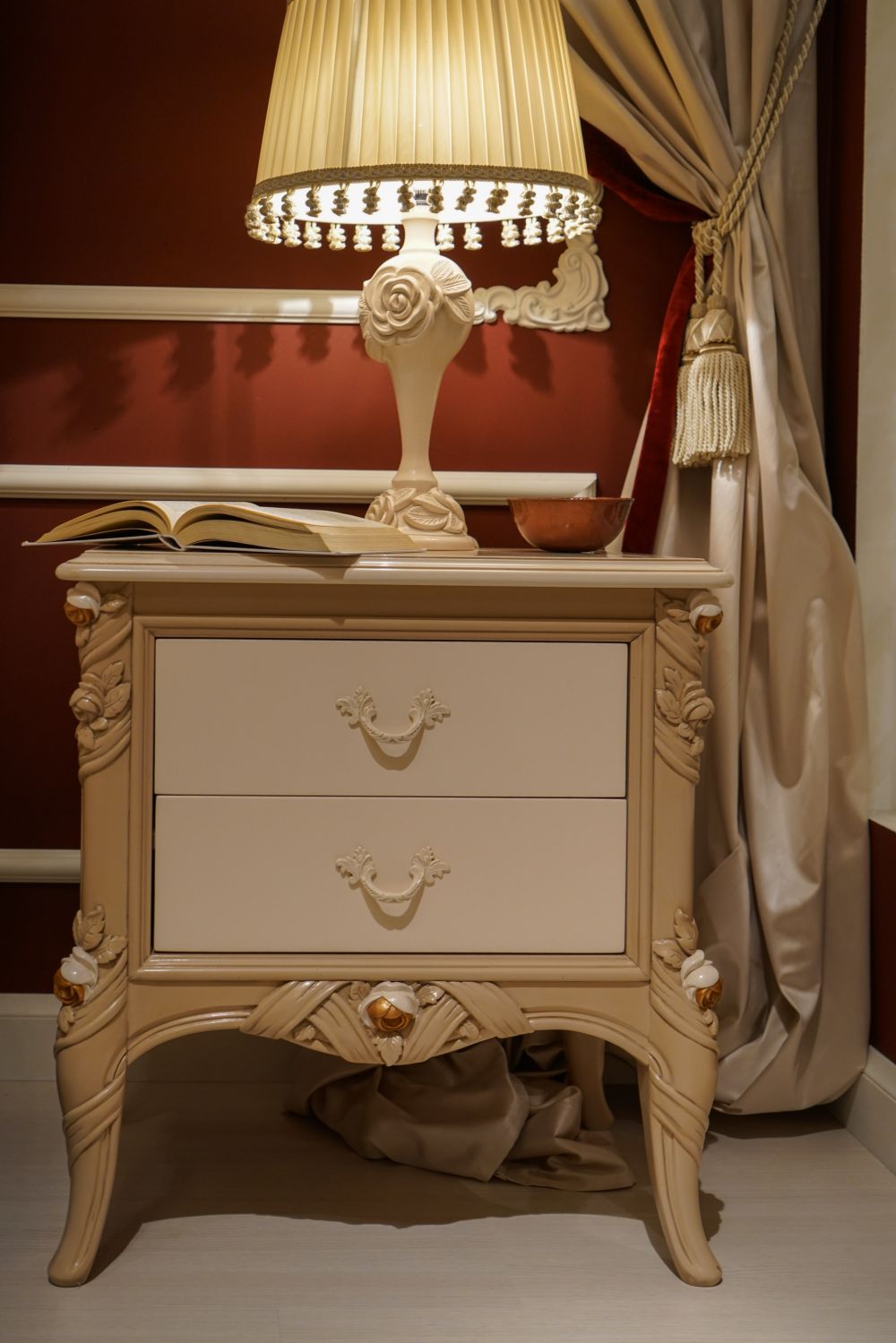
What Does Baroque Architecture Look Like?
Bizarre architecture emphasized bold massing, colonnades, domes, light-and-shade 'painterly' colors. The style too uses the bold play of book and void. This is the era when huge staircases came into fashion likewise – Wikipedia.

What Makes Furniture Baroque Way?
A number of features make a piece of furniture baroque.
Information technology's Very Ornate.
You lot can identify furniture from the Baroque era by its ornate and luxurious look. Elements include intricate, complicated and exaggerated decorations. As a result, oftentimes they are flowers, leaves, and cherubs.
It'southward also Luxurious
Baroque manner furniture is very detailed and overly decorated. The overall wait is grand and lavish but every bit symmetrical and balanced.
According to the Victoria and Albert Museum of London, Baroque era interiors were luxe: Piece of furniture was upholstered in rich velvet and damask, often with gilt-wood and marquetry framing. The style remained fashionable until nearly 1725.


5 Specific Features of Bizarre Furniture
The museum explains that Baroque style article of furniture has several defining characteristics:

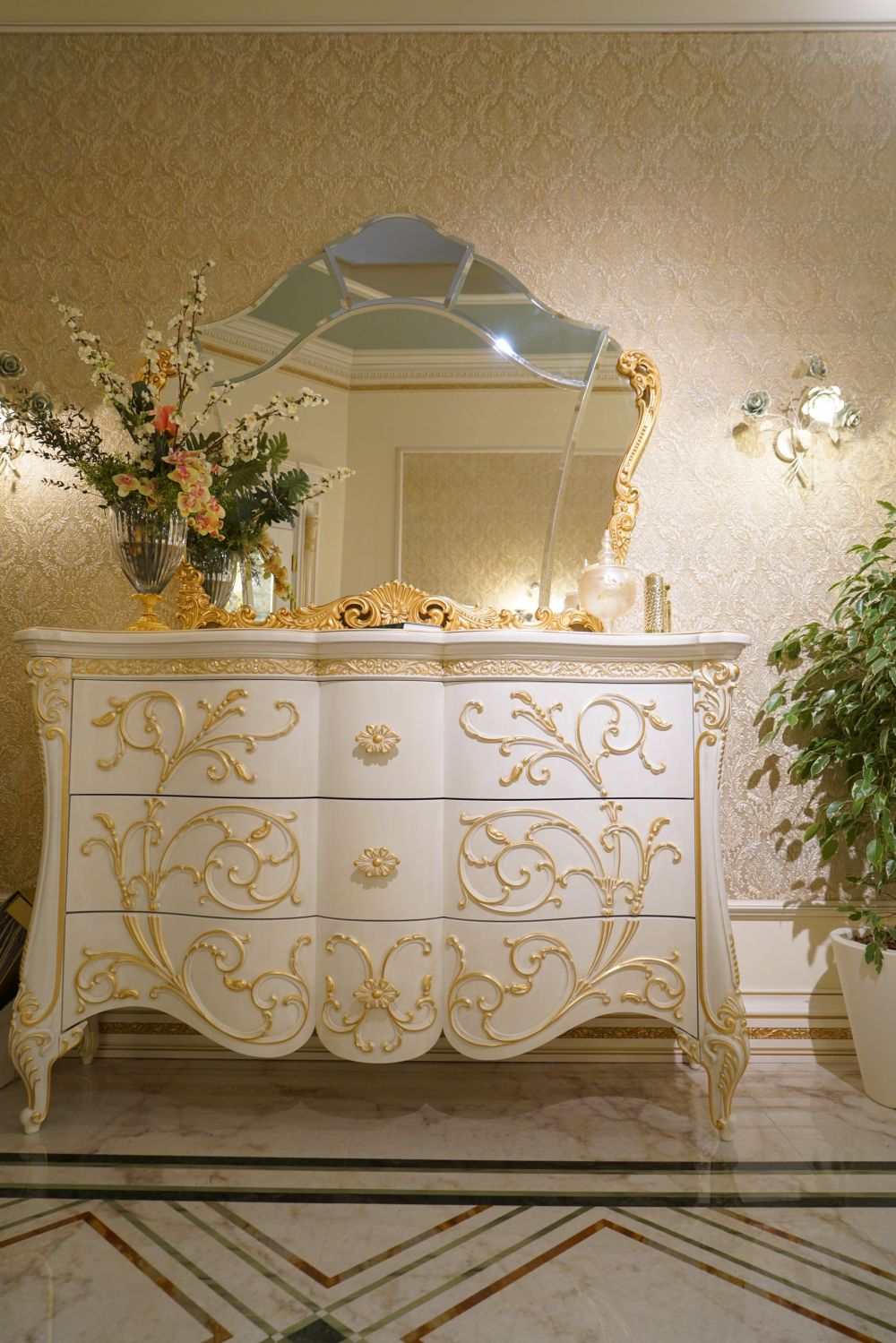

Leafage Motifs
The baroque style uses a lot of plant life in its ornamentation. In view of this, some of the most mutual ones are scrolling leaf and flower garlands.
Marquetry
Marquetry involves laying unlike-colored woods veneers onto the surface of piece of furniture. Really, French and Dutch cabinetmakers were the ones who started this technique.
Putti
This is an Italian discussion that ways "boys." Commonly tt refers to the chubby infants used in much of Baroque décor.
Crests and initials
Monograms used for ornamentation were common in Baroque-mode furniture. Likewise, heraldic crests are likewise seen in this style.
Lambrequin motif
We've already pointed out that that rich textiles were common in the Baroque era. The features of these fabrics were used in other media besides. For example, one of the most common is a tasseled cloth motif, called a lambrequin.
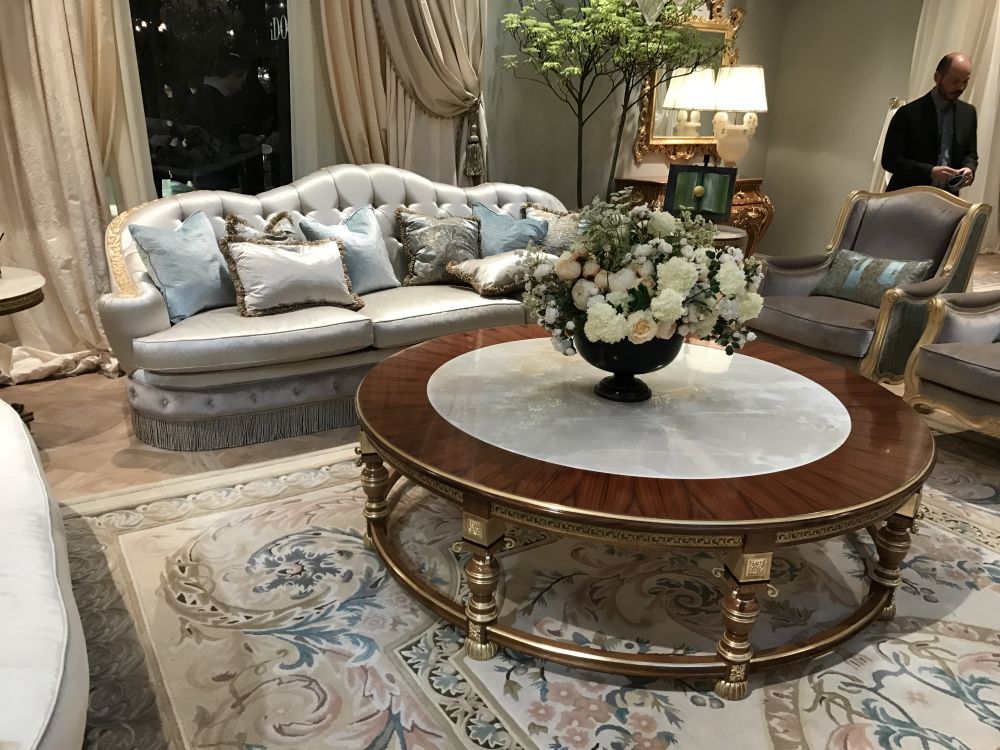
Who Used Baroque Way?
The French were the main adopters of the Baroque fashion. Louis the 14'southward reign marked the end of the Renaissance and the rise of this very influential style. This was frequently considered the near magnificent of the French period styles, writes the V&A.
Why Was Baroque Important?
- Great furniture designers and cabinetmakers thrived in this era.
- Andre Charles Boulle was the cabinetmaker to King Louis 14. Boulle was one of the greatest artists in the field of inlaying ebony wood with tortoiseshell, brass and other metals.
- He created the cute pieces that belong to the Baroque Louis Fourteen historic period.
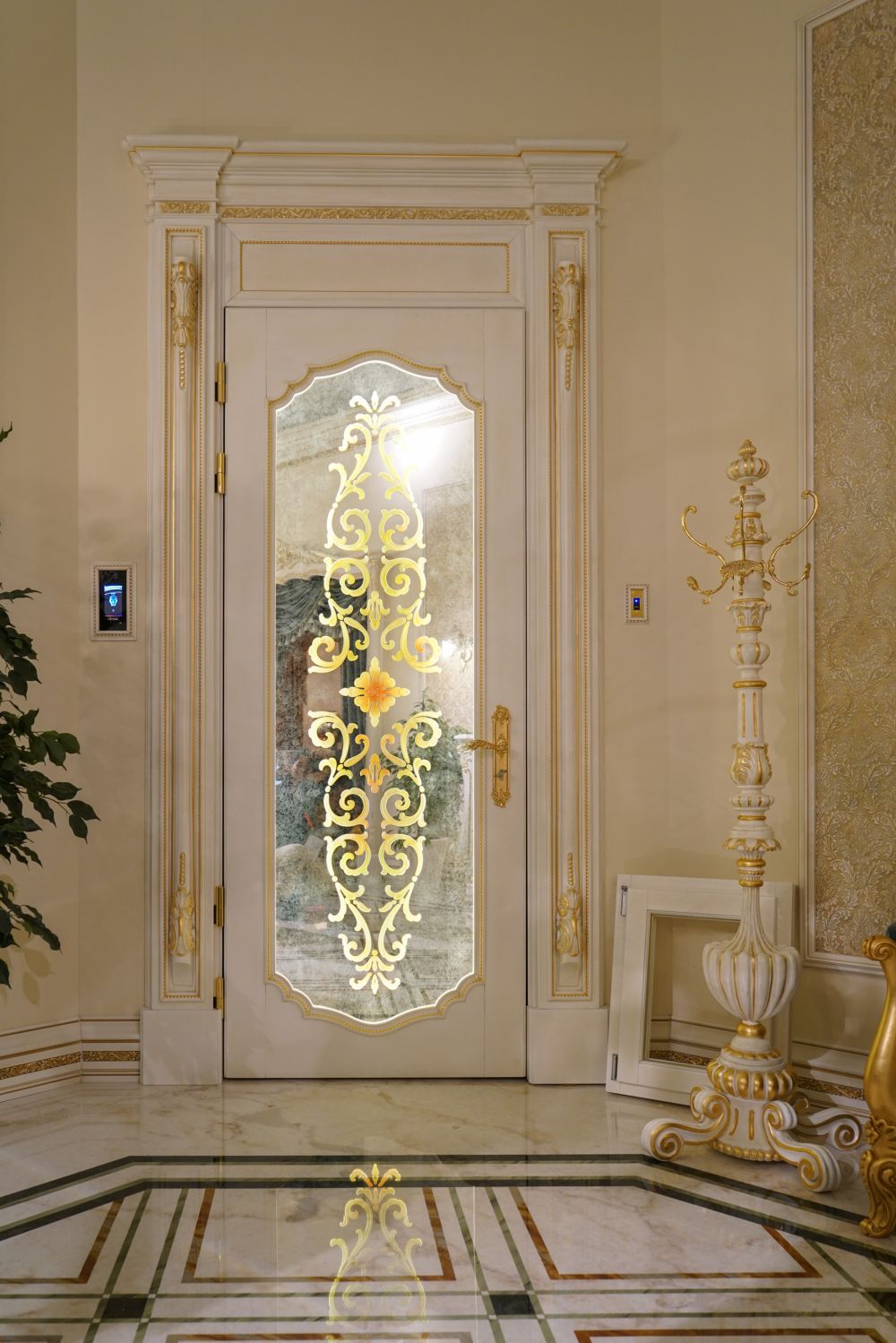

What Makes Furniture Baroque?
- Unique legs — Originally, Baroque era furniture had turned or pedestal feet. Later on, curved legs were the chief element, becoming a hallmark of the period.
- Smaller tables — This is the flow when modest, round and oblong tables and consoles became common, according to the V&A Museum.
- Inlaid features — Chests and cabinets, many with inlaid forest panels, were very pop.
- Quality wood — These pieces were fabricated from the best woods and came mainly from Italy. Cabinetmakers mainly used oak, walnut, chestnut, and ebony. Rosewood, sandalwood, tulipwood, and other exotic wood are used for much of the ornamentation.
- Wood elements — Upholstered pieces can exist covered in cloth or leather, but wood is always a prominent feature.
- A gilded cease — The offset pieces of baroque piece of furniture were coated in a clear layer of varnish. Over time, preferences changed and different types of Baroque style furniture were fabricated. The wealthy favored pieces with gold-painted forest as a condition symbol. Sometimes, this paint had a crackled finish.
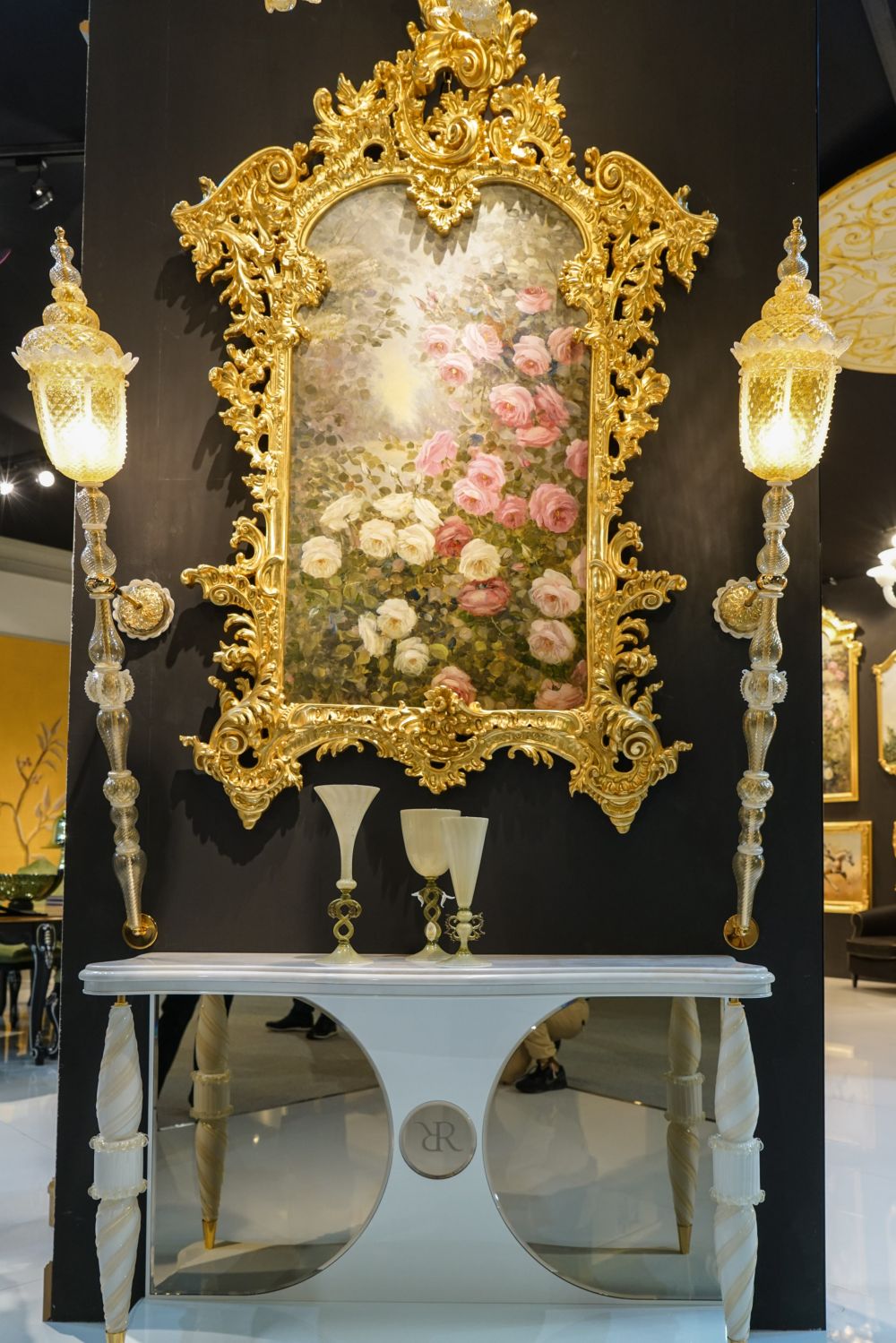

The Divergence Between Baroque and Rococo Style
Rococo
The lighter, more svelte Rococo style originated in France at the end of the Baroque catamenia. Furthermore, it is generally considered a subset of the Baroque era, notes SF Gate HomeGuides. In fact, some historians phone call it belatedly Baroque.
Interior designers and artists used the Rococo fashion, but non architects. Regardless, it was a shorter stylistic period: The Bizarre era spanned the 17thursday century, just the Rococo era lasted from the 1730s to the 1760s. This coincided with the reign of Louis XV.


The term Rococo comes from the French word rocaille. The discussion denotes the shell-covered rock work that was used to decorate artificial grottoes, writes Britannica. Rocaille as well refers to how the French love arranging rock gardens in the shape of seashells.

Rococo Style Characteristics
A number of details and features tin can help distinguish Rococo fashion:
- While Baroque is opulent and heavier –more "serious" – Rococo is lighthearted, frivolous and whimsical.
- Decoration, especially abstruse and asymmetrical detail, was typically used to create a sense of flow.
- Often, it includes Asian influences like chinoiseries. Trade with the Far E influenced decorative motifs, and these patterns and lacquer work became very fashionable.

Rococo is Rebellious Design
This way originated as a "defection against the tiresome and solemn Baroque designs of the majestic courts of France in Versailles." Just as today'southward interior designs tend to exist more casual, the Rococo age was more informal than the Bizarre style. The general mood was all virtually comfort, warmth and privacy.

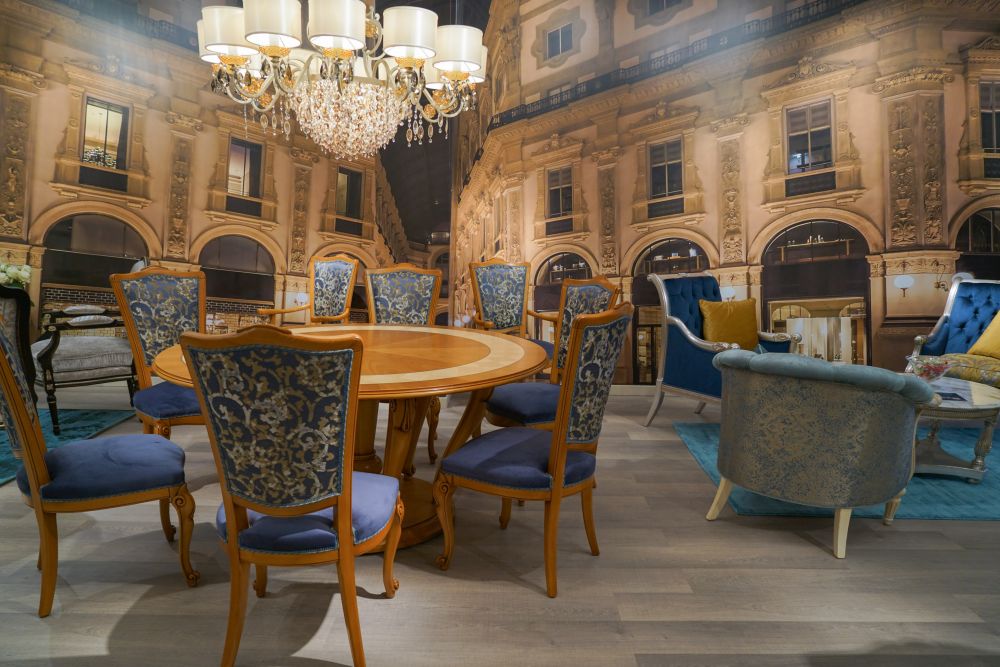
Rococo Meant Unified Design
According to DenGarden, the Rococo interior and its elements are meant to be one organism, creating a unified event. Custom-made pieces were part of the endeavour to create interior décor that went together. Much planning went into article of furniture placement, the shapes of the pieces and the decorative features.

Rococo Gave Rising to Personal Space
Rococo style also promoted a i-story salon to create intimacy. It was not as focused on impressing guests, as was the Bizarre era with its ii-story rooms.
This era also saw the rise of the boudoir, every bit well every bit rooms devoted to pleasures similar games, music and reading. This era gave u.s. the chaise longue.

Rococo Was an Interior Update
Instead of starting over entirely, wealthy manor owners kept the baroque architecture of their homes, but renovated in the interiors with the plasterwork, murals, mirrors, furniture, and porcelain in a lighter, more feminine manner.


Rococo and Bizarre Have Much in Common
When you look at Baroque and Rococo furniture, they seem quite similar.
- Both are heavily decorated.
- They also have curvy legs in mutual – and sometimes animal legs.
- They both feature intricate embellishments of scrolls, leaves and shells.
Simply await closer and the differences start to emerge:
- Rococo piece of furniture is more delicate and feminine and uses lighter shades of ivory, gold and pastel colors.
- Chairs legs are thinner, seats have an organic grade and wider arms.
- Moreover, symmetry is not disquisitional.
- Upholstery in the Rococo style is similar to that of Baroque, however, it includes brocatelle and flowered or painted silks.
- Rococo uses serpentine curves and features lighter topics such as romantic love and portraiture.
- Baroque art is darker, more than dramatic and theatrical.
- Rococo interiors oft highlight big candelabras, magnificent chandeliers and wall sconces, chiefly used to create a cozy space.
- Mirrors too feature prominently to intensify the feeling of open space.

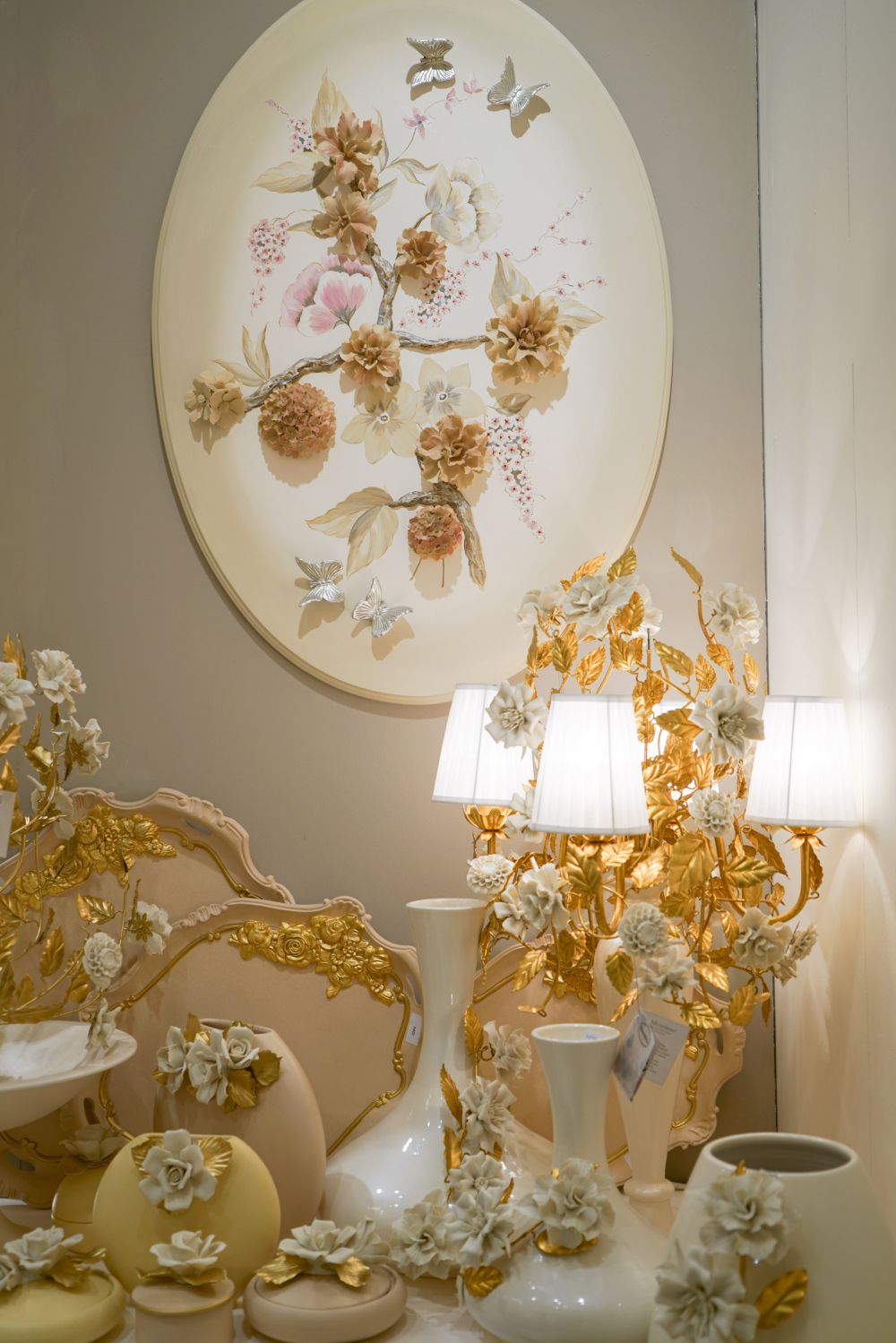





Falling Out of Favor
Rococo style started to driblet in popularity by the 1750s. Critics in French republic attacked its trivia focus and over-the-top ornament, thus leading to the more austere Neoclassic motion in the 1760s.
 View in gallery
View in gallery 
 View in gallery
View in gallery 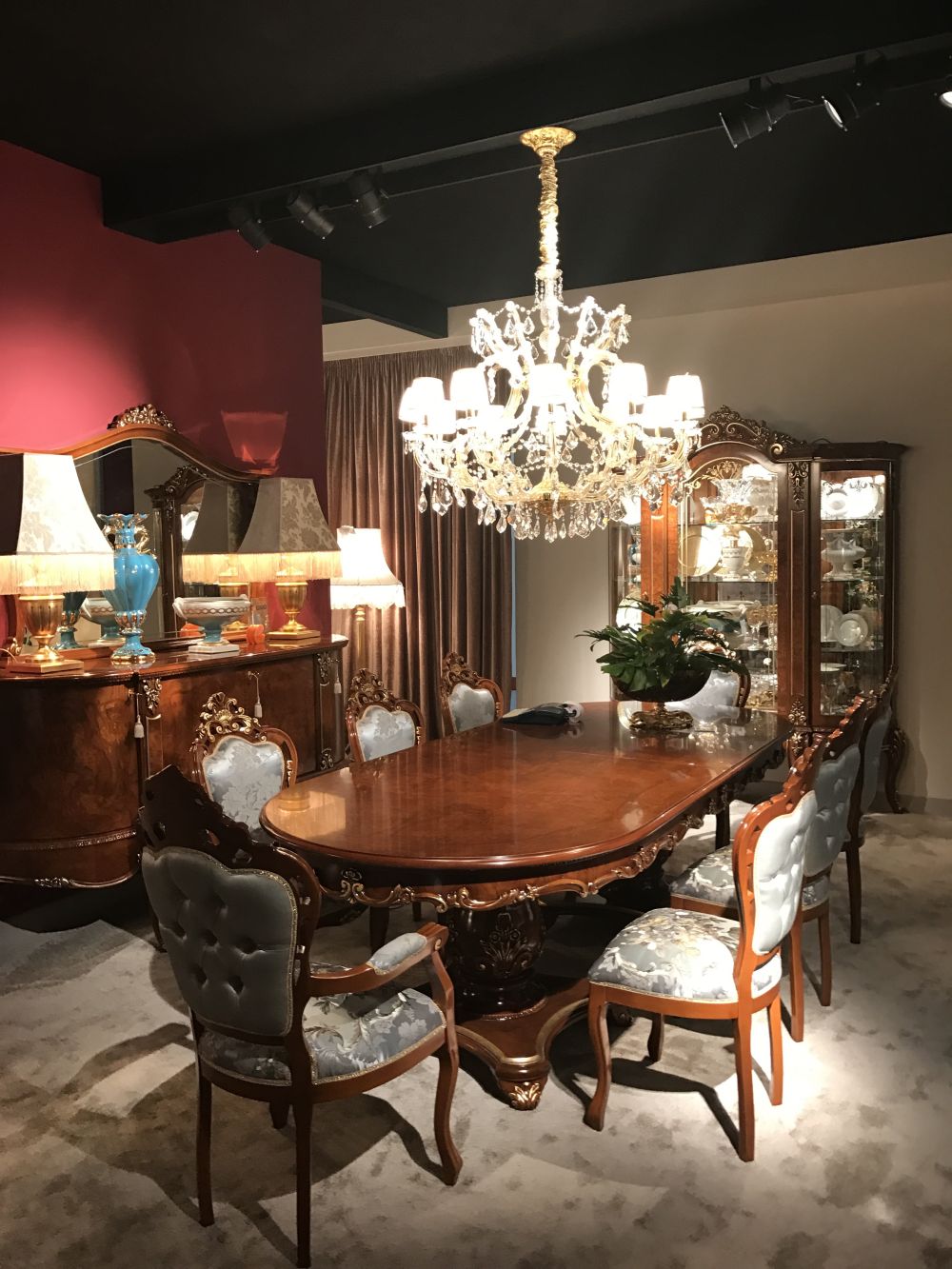 View in gallery
View in gallery Rococo grew out of the Baroque era, so while the two styles have different characteristics they however have quite a few similarities. These common elements arrive easy to mix and match the pieces.
Those who love the ornate nature of these styles may be happy to go full-on Bizarre in a space. On the other paw, information technology's quite alright to incorporate just a few pieces of Baroque and Rococo furniture into today'southward modern interiors. This means that people who prefer cleaner lines can withal have some gilded whimsy in an interior.
Source: https://www.homedit.com/baroque-and-rococo-style-furniture/
0 Response to "Details Make the Difference in Baroque, Rococo Style Furniture"
Enregistrer un commentaire